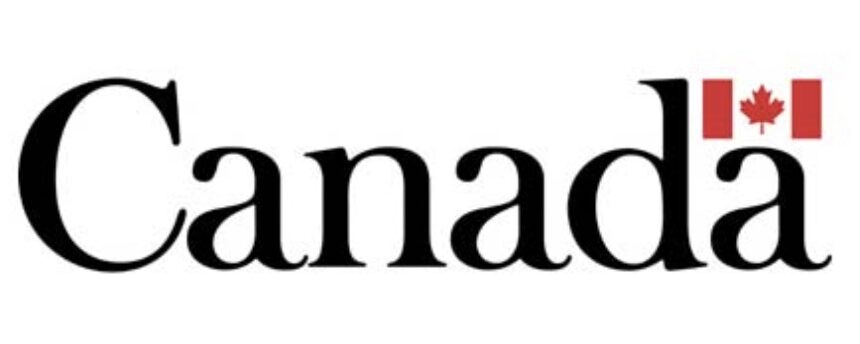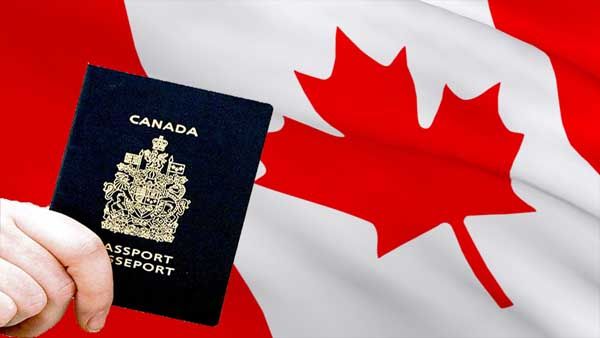How to Get a Spouse Visa to Canada Through Marriage
If you’re planning to move to Canada with your spouse, obtaining a spouse visa is a crucial step. This guide will walk you through the process of getting a spouse visa to Canada through marriage, providing detailed information and tips to help you navigate the application process smoothly.
Find your Eligibility for FREE!!
Understanding the Spouse Visa in Canada
The spouse visa, also known as the Spousal Sponsorship program, allows Canadian citizens and permanent residents to sponsor their spouse or common-law partner for permanent residence in Canada. This program is part of the family class immigration category and is designed to reunite families.
Eligibility Criteria for Spousal Sponsorship in Canada
To successfully navigate the spousal sponsorship process in Canada, both the sponsor and the applicant must meet specific eligibility criteria. Understanding these requirements is crucial for a smooth application process. Let’s delve into the details:
Sponsor Eligibility
-
Canadian Citizenship or Permanent Residency:
- The sponsor must be a Canadian citizen or a permanent resident of Canada. This is a fundamental requirement as the sponsorship program aims to reunite families with existing ties to Canada.
-
Age Requirement:
- The sponsor must be at least 18 years old. This age requirement ensures that the sponsor is legally an adult and capable of taking on the responsibilities associated with sponsorship.
-
Financial Stability:
- The sponsor must not be in receipt of social assistance for reasons other than disability. Financial stability is crucial as the sponsor will be responsible for supporting the applicant financially.
-
Previous Sponsorship Undertakings:
- The sponsor must not be in default of any previous sponsorship undertakings. This means that if the sponsor has previously sponsored someone, they must have fulfilled all financial and legal obligations related to that sponsorship.
Applicant Eligibility
-
Age Requirement:
- The applicant must be at least 18 years old. This age requirement ensures that the applicant is legally an adult and capable of entering into a marital or common-law relationship.
-
Legal Marriage or Common-Law Relationship:
- The applicant must be legally married to the sponsor or in a common-law relationship. A common-law relationship is defined as a couple who have lived together continuously for at least one year.
-
Genuine Relationship:
- The relationship must be genuine and not entered into primarily for the purpose of acquiring any status or privilege under the Immigration and Refugee Protection Act. This means that the relationship should be authentic and not a marriage of convenience.
Proving the Genuineness of Your Relationship
To demonstrate the genuineness of your relationship, you will need to provide evidence such as:
- Marriage Certificate: A legal document proving your marriage.
- Photographs: Pictures of you and your spouse together.
- Correspondence: Emails, letters, or messages exchanged between you and your spouse.
- Joint Financial Documents: Bank statements, utility bills, or other documents showing joint financial responsibilities.
Seeking Professional Help
Navigating the spousal sponsorship process can be complex, and seeking professional help can significantly improve your chances of success. Consider consulting with an immigration lawyer or consultant who can provide guidance tailored to your situation.
Planning Your Life in Canada
Once your spousal sponsorship application is approved, you can start planning your life in Canada. Consider exploring job opportunities in sectors such as construction, which often offer visa sponsorship. Additionally, look into government assistance programs to help you settle in.
Meeting the eligibility criteria for spousal sponsorship is the first step towards reuniting with your spouse in Canada. By understanding these requirements and preparing a strong application, you can increase your chances of a successful outcome. For more detailed information, visit the Immigration, Refugees and Citizenship Canada (IRCC) website or consult with an immigration professional.
Types of Spousal Sponsorship
There are two types of spousal sponsorship applications:
-
Inland Sponsorship:
- This type of application is for spouses or common-law partners who are already living in Canada with temporary status.
- The applicant can remain in Canada while the application is being processed.
-
Outland Sponsorship:
- This type of application is for spouses or common-law partners who are living outside Canada.
- The applicant must apply through a visa office outside Canada.
Application Process for a Spouse Visa to Canada
Applying for a spouse visa to Canada involves several crucial steps. This comprehensive guide will walk you through each stage of the application process, ensuring you are well-prepared and informed. Let’s dive into the details:
Step 1: Gather Required Documents
Before initiating the application process, it’s essential to gather all the necessary documents. These documents will serve as evidence to support your application and prove the genuineness of your relationship. Here’s what you’ll need:
-
Proof of Relationship:
- Marriage Certificate: A legal document proving your marriage.
- Photographs: Pictures of you and your spouse together, showcasing your life as a couple.
- Correspondence: Emails, letters, or messages exchanged between you and your spouse, demonstrating your ongoing communication.
-
Proof of Identity:
- Passport: A valid passport for both the sponsor and the applicant.
- Birth Certificate: Official birth certificates for both parties.
-
Police Clearance Certificates:
- Obtain police clearance certificates from all countries where you have lived for six months or more since the age of 18. This is to ensure that you have no criminal record that could impact your application.
-
Medical Examination Results:
- Undergo a medical examination by a panel physician approved by Immigration, Refugees and Citizenship Canada (IRCC). The results should indicate that you are in good health and do not pose a risk to public health or safety.
-
Proof of Financial Support:
- Provide evidence that the sponsor has sufficient financial resources to support the applicant. This can include bank statements, employment letters, and tax returns.
Step 2: Complete the Application Forms
The application forms can be downloaded from the IRCC website. It’s crucial to fill out these forms accurately and completely. Any errors or omissions can lead to delays in processing your application. Here are some tips:
- Double-Check Information: Ensure that all the information provided is accurate and consistent across all forms.
- Seek Professional Help: If you’re unsure about any part of the application process, consider consulting with an immigration lawyer or consultant. They can provide guidance and help you avoid common pitfalls.
Step 3: Pay the Application Fees
The application fees for spousal sponsorship include several components:
- Processing Fees: The fee for processing your application.
- Right of Permanent Residence Fee: This fee is required for the principal applicant and any accompanying family members.
- Biometrics Fee: This fee covers the cost of biometric screening, which includes fingerprints and a photograph.
These fees are subject to change, so it’s important to check the IRCC website for the most up-to-date information. Ensure you have the funds ready to avoid delays in your application process.
Step 4: Submit the Application
Once you have gathered all the required documents and completed the application forms, you can submit your application. The submission process varies depending on whether you are applying from within Canada (inland) or from outside Canada (outland):
- Inland Applications: Submit your application to the Case Processing Centre in Mississauga, Ontario.
- Outland Applications: Submit your application to the visa office responsible for your country of residence.
Step 5: Wait for Processing
The processing time for spousal sponsorship applications varies depending on the type of application and the visa office processing it. You can check the current processing times on the IRCC website. During this waiting period, consider exploring job opportunities in Canada, such as caregiver jobs with visa sponsorship or fruit picker jobs, to help you plan your future in Canada.
Additional Tips for a Successful Application
- Stay Organized: Keep all your documents and forms organized in a secure place. Make copies of everything before submission.
- Be Patient: The processing time can vary, so it’s important to be patient and stay informed about the status of your application.
- Plan Ahead: Start looking into affordable housing options and government assistance programs to help you settle in Canada once your application is approved.
The application process for a spouse visa to Canada requires careful planning and preparation. By gathering all the required documents, completing the application forms accurately, paying the necessary fees, and submitting your application correctly, you can increase your chances of a successful outcome. For more detailed information, visit the IRCC website or consult with an immigration professional.
Life in Canada as a New Immigrant: A Comprehensive Guide
Once your spousal sponsorship application is approved, the exciting journey of settling into life in Canada begins. Canada is known for its welcoming environment and diverse opportunities. Here are some essential tips to help you navigate your new life and make the most of your experience:
Find Affordable Housing
One of the first steps in settling into Canada is finding a place to live. Affordable housing can significantly ease your transition. Consider the following options:
-
Temporary Housing: Look for affordable temporary housing options that cater to immigrants. These options can provide a short-term solution while you search for a more permanent residence.
-
Cheap Apartments: Explore cheap apartments in Canada that fit your budget. Living in affordable housing can help you save money and invest in other aspects of your new life.
-
Cheapest Cities to Live: Research the cheapest cities in Canada to live as a new immigrant. These cities often offer lower living costs and can be a great starting point for your life in Canada.
Explore Job Opportunities
Canada offers a wide range of job opportunities for new immigrants. Exploring different sectors can help you find a job that suits your skills and interests:
-
Pet Care Jobs: Consider applying for pet care jobs, which often offer visa sponsorship and can be a rewarding career path.
-
Warehouse Work: Look into high-paying warehouse worker jobs that provide stable employment and opportunities for growth.
-
Care Assistant Jobs: Explore care assistant jobs that offer competitive salaries and the chance to make a positive impact on people’s lives.
-
Construction Jobs: Consider construction jobs that offer work visa sponsorship and can provide a stable career in a growing industry.
Learn About Government Assistance Programs
Canada has several government assistance programs designed to support new immigrants. These programs can provide valuable resources as you settle into your new life:
-
Healthcare: Familiarize yourself with Canada’s healthcare system and the services available to new immigrants.
-
Employment Services: Utilize employment services that offer job search assistance, resume building, and interview preparation.
-
Language Training: Take advantage of language training programs that can help you improve your English or French language skills, enhancing your employability.
Connect with the Community
Building a support network is essential for a smooth transition into life in Canada. Here are some ways to connect with your new community:
-
Join Local Groups: Look for local community groups that align with your interests. These groups can provide opportunities to meet new people and build lasting friendships.
-
Attend Events: Participate in local events and festivals to immerse yourself in Canadian culture and meet like-minded individuals.
-
Volunteer: Consider volunteering for local organizations. Volunteering can help you gain Canadian work experience, improve your language skills, and expand your social network.
Additional Tips for a Successful Transition
-
Stay Informed: Keep up-to-date with local news and events to stay informed about your new community.
-
Seek Professional Help: If you encounter challenges, don’t hesitate to seek help from professionals, such as immigration consultants or career counselors.
-
Plan for the Future: Set long-term goals and create a plan to achieve them. This can include furthering your education, advancing your career, or starting a family.
Settling into life in Canada as a new immigrant can be an exciting and rewarding experience. By finding affordable housing, exploring job opportunities, learning about government assistance programs, and connecting with the community, you can create a fulfilling life in Canada. For more detailed information, visit the Immigration, Refugees and Citizenship Canada (IRCC) website or consult with an immigration professional.
Conclusion
Getting a spouse visa to Canada through marriage involves several steps, but with careful planning and preparation, you can navigate the process smoothly. By providing strong evidence of your relationship, being honest and consistent in your application, and seeking professional help when needed, you can increase your chances of a successful spousal sponsorship application. Once you arrive in Canada, take advantage of the many opportunities and resources available to new immigrants to help you settle in and build a successful life.
For more information on spousal sponsorship and life in Canada, visit the IRCC website or consult with an immigration professional.







